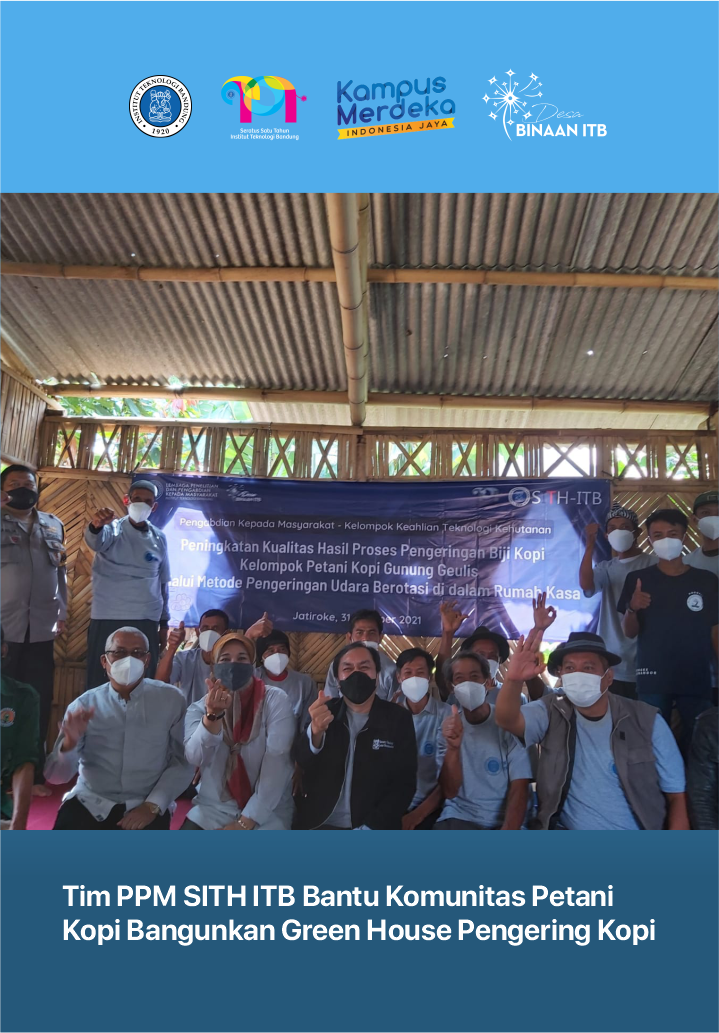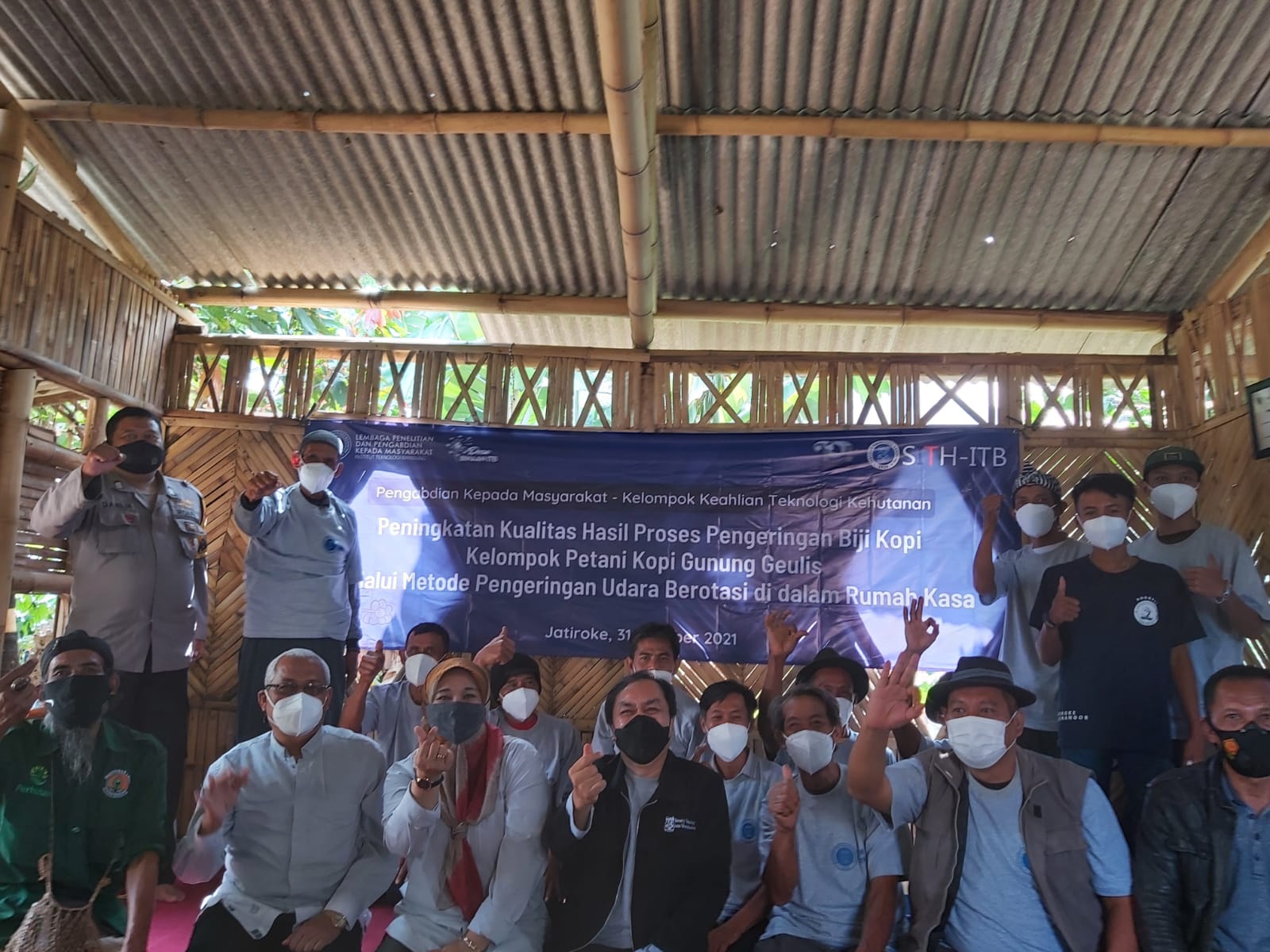

#repost from Tim PPM SITH ITB Bantu Komunitas Petani Kopi Bangunkan Green House Pengering Kopi (inisumedang.com)
The community service team (PPM) of the Bandung Institute of Technology (ITB) School of Science and Technology, chaired by Dr. Ir. Yayat Hidayat MSi consists of Dr. Ir. Rijanti Rahaju Maulani MSi and Ahim Ruswandi MP helped the Gunung Geulis Coffee Farmer Community design and build a Green House for energy-efficient and environmentally friendly coffee dryers (HERANG) in Jatiroke Village, Jatinangor District, Saturday (30/10/2021).
According to Dr. Ir. Yayat PPM aims to assist coffee farmers in making coffee drying efforts in order to produce better quality, energy efficient and environmentally friendly drying of coffee cherries. The PPPM was attended by coffee farmers around Mount Geulis who are members of the Gunung Geulis Coffee Farmers Community (KOPPI GUGEULS) chaired by Mr. Saepudin.
"The implementation of PPM involves students in the MBKM (Independent Campus Independent Learning) program scheme," he said.
According to Dr Yayat, drying coffee cherries is one of the important stages in producing quality coffee. The need for solar energy dryers that are not in the form of sun drying is an effort to improve the quality of drying results because it can produce uniformity in moisture content, in addition to the advantage of extending the shelf life.
"Given the importance of dryer buildings for farmers, it is necessary to consider drying buildings that can function as expected, and affordable prices need to be considered," he said.
Dr. Yayat added that the dryer building that utilizes solar energy (Green House/GH) is an alternative option. The factors that encourage the development of solar energy dryer (GH) buildings in Indonesia are due to the abundant availability of solar energy, which is a renewable, free and environmentally friendly energy.
The GH dryer designed by the PPM SITH ITB team is a solar-energy drying building that utilizes the greenhouse effect that occurs due to the transparent cover on the walls of the building and the absorber plate as a heat collector to increase the air temperature in the drying room. The transparent layer allows shortwave radiation from the sun to enter and hit building elements (including absorber plates). This causes the reflected short-wave radiation to turn into long-wave radiation and is trapped in the building because it cannot penetrate the transparent covering, causing high temperatures. This process is called the greenhouse effect.
The GH desiccant building “Herang” is designed to measure 11m x 4m with a height of 2m. The building construction uses non-metallic and environmentally friendly materials. The roof and walls of the building use UV plastic. The coffee cherries rack is made of tiers to run a rotating drying system.
“Broadly speaking, the dryer building consists of two parts, namely a roofed building and a non-roofed building. The flow of the drying process starts from the roofless building and then enters the roofed building. This “Herang” dryer building is in principle designed at an affordable cost by utilizing efficient energy (solar energy) instead of electricity, bamboo construction materials and is environmentally friendly. The way it works is to trap heat in the GH room and release moisture trapped in the GH room so that the drying process goes well, it doesn't cause a "cash hardening" effect, he explained.
The high air temperature causes the process of evaporation of water from the object being dried, and the water vapor leaving the drying object causes increased humidity in the room. This will reduce the effectiveness of the evaporation process at a later stage. To keep the evaporation process going well, the humidity in the room must be maintained at an adequate level. The flow of air from the outside and efforts to get rid of wet air can be done using several methods.
“The design process was carried out by the Gunung Geulis coffee farmers under the guidance of the SITH PPM Team in the field. With this method, the transfer of knowledge and technology of building drying design techniques will be more effective than the direct group given the design alone. With this method of delivery, farmers can express their ideas and ideas according to the abilities of the group. This method will result in more effective and efficient group work and create a sense of shared responsibility in maintaining and using the GH dryer building that will be built later,” he said.
